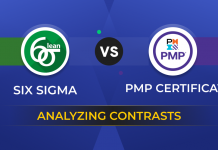
In today’s projectized world, project practitioners across the globe are employing techniques to manage a project’s journey starting from business case to complete realization of the expected benefits that are in line with the organizational business strategy. In this respect, having a robust and effective project team communication plays a key role to ensure productivity
One of the key strategic components of enterprises across the globe is to accommodate project management best practices in their DNA so that the workforce is aligned with the best practices to complete a project successfully irrespective of the size or complexity.
In this regard, project management team communication forms an integral part of successful project delivery. Hence, creating a highly-effective blueprint on how should a project team communicate is essential to a project’s lifecycle from the beginning to the end. These 7cs of communication with examples can help you out create an effective and constructive blueprint for team.
Here are some tips to create a highly-effective blueprint for communication for project team.
-
Create a Comprehensive Project Team Communication Plan:
The first thing every project should have is a comprehensive project communication plan. Do not procrastinate in this regard, and your communication plan should consist of all the required information on project stakeholders, project objectives, a well-written project kick-off plan, communication strategy, and budget required for expenditures that are related to communication.
Moreover, your communication strategies should be holistic and incorporate information on when communication has to happen, what to be communicated, who should be part of it, and a backup plan if there are any risks and unforeseen emergencies.
-
Conduct Your Meetings Regularly:
Usually, 90% of project managers’ job role falls under communication. To know a robust project team communication channel is very essential to successfully complete the project. As a project manager, conduct regular meetings with the entire team present. This will help team members to understand project activities and share their inputs and concerns if they have any.
- Also, if there is any change that is being discussed then everybody can be on the same page and reduce miscommunication among team members and other project stakeholders. Ensure your meetings are kept short and maximum output is achieved.
Best practices to conduct meetings:
- Create meeting agenda and send it to all the participants before the meeting happens
- Assign a timekeeper to ensure your meeting sticks to its schedule
- Record the entire meeting, just in case there are any misconceptions
- Schedule the next meeting in advance, and take note of discussions that were not addressed and which will be carried forward to the next meeting
-
Create an Open Stakeholder Communication:
By creating an open forum, you are encouraging both the team and the stakeholders to communicate when necessary. Though many enterprises conduct daily meetings to discuss the status of the project, some may prefer a weekly status report. Irrespective of when these meetings are happening, it depends upon the importance of the project and the vested interests of the stakeholders. By having open stakeholder communication, they can always be kept in the loop with any minor and major project activities on a regular basis.
-
Create a Transparent Culture:
Communication as we know can be time-consuming. So a project manager can avoid wasting others’ time by creating a transparent culture with regard to project management team communication. Before scheduling a meeting or calling a fellow team member or writing an email, and to keep your message clear and concise, consider the following:
- What is the purpose of communication
- Who all are part of the audience
- What is the desired outcome
- Whether it is the right medium to communicateMake sure your message(s) are easy to understand and one which can be accessed by the intended recipient(s).
-
Avoid Criticizing while Communicating and be Inclusive:
Nothing demotivates your team members faster than the feeling when they cannot voice their opinions, concerns, and accomplishments. When things are not happening the way you want, try solving problems than finding someone to blame in the first instance. Be inclusive, invite everybody for meetings and get everybody’s opinions. It is always better to get more inputs than just a few of them.
-
Create a Central Hub of Communication:
To create a highly-effective communication blueprint, it needs a common ground where everybody can see what is happening in the project. During the project kick-off meeting, make sure you ask your to ask their communication preferences and use project software that is on-premise or cloud-based, whichever you deem fit, and create a central hub of communication that includes all types of communication channels. This central hub reduces the communication gap and people will not be excluded from conversations that are important to them.
-
Understanding the Art of Being Wrong:
It happens so that, making everyone see that you were right may seem like a big win at first, but that kind of victory can have a consequential effect on the attitude of the team members. Completing a project requires a team, and trying to put a lot of energy to prove yourself right can do the undoing of your team morale.
Do not estrange yourself from the team to the extent that they completely stop communicating with you. You being right may prove someone else wrong and many do not admit that they’re wrong because they take criticism and feedback too personally and in turn, there is a breakdown of communication.
Projects cannot be successful with a team of one. Personalities need to be checked from the beginning when team members are communicating with one another. In fact, you can agree to disagree and once in a while, you can accept that you were wrong to make things right from a team’s perspective.
As project teams are in a constant state of communication through various mediums like email, phone, texts, face-to-face discussions, and even non-verbal interactions, it is imperative to have a highly-effective communication blueprint for the team to ensure successful project completion. Do let us know in the comments section if you feel there is more to creating an effective project team communication blueprint.














